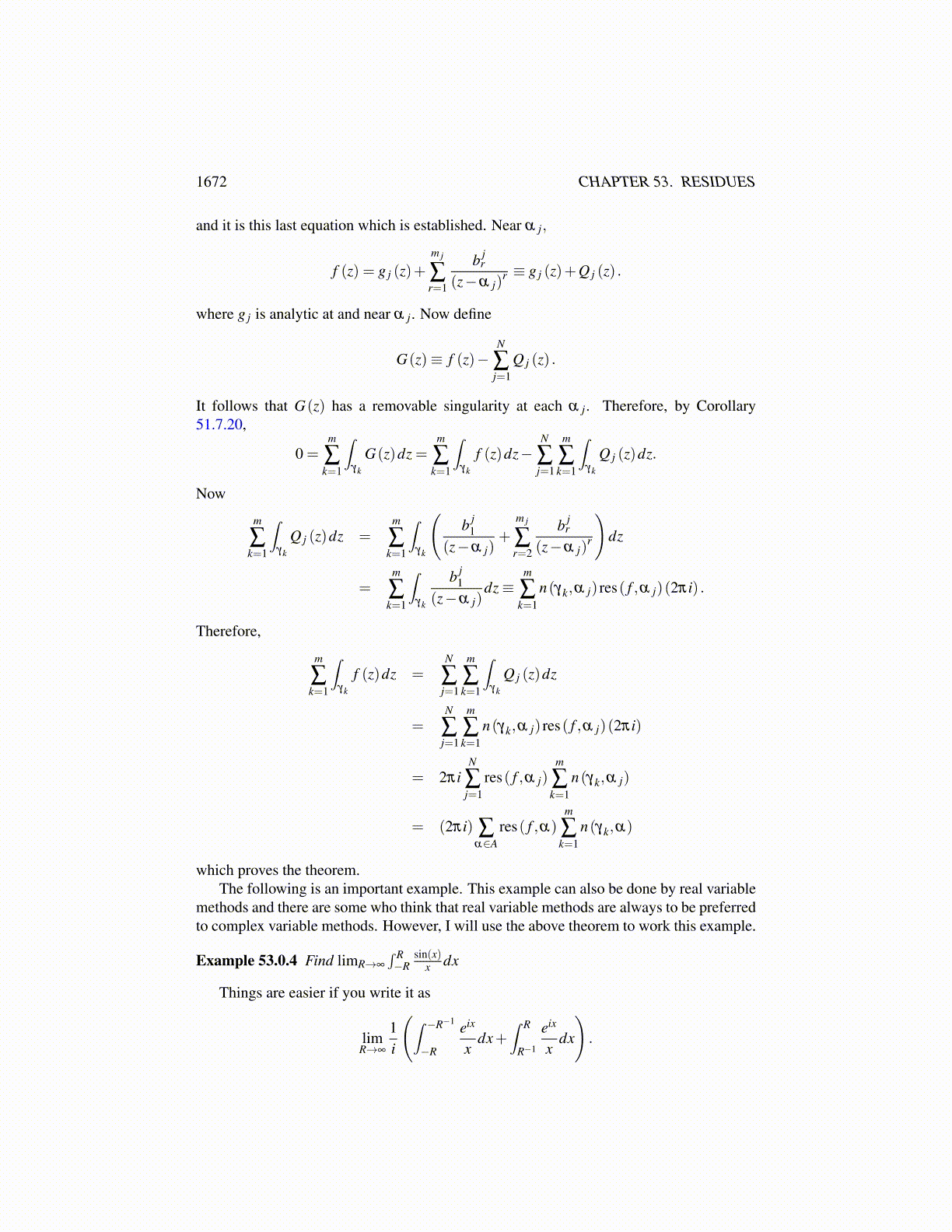
1672 CHAPTER 52. THE OPEN MAPPING THEOREM
Argue that small changes will produce small changes in pM (z) . Then apply Theorem52.6.1 using γk a very small circle surrounding zk, the kth eigenvalue.
3. Suppose that two analytic functions defined on a region are equal on some set, Swhich contains a limit point. (Recall p is a limit point of S if every open set whichcontains p, also contains infinitely many points of S. ) Show the two functions coin-cide. We defined ez ≡ ex (cosy+ isiny) earlier and we showed that ez, defined thisway was analytic on C. Is there any other way to define ez on all of C such that thefunction coincides with ex on the real axis?
4. You know various identities for real valued functions. For example
cosh2 x− sinh2 x = 1.
If you define coshz≡ ez+e−z
2 and sinhz≡ ez−e−z
2 , does it follow that
cosh2 z− sinh2 z = 1
for all z ∈ C? What about
sin(z+w) = sinzcosw+ coszsinw?
Can you verify these sorts of identities just from your knowledge about what happensfor real arguments?
5. Was it necessary that U be a region in Theorem 51.5.3? Would the same conclusionhold if U were only assumed to be an open set? Why? What about the open mappingtheorem? Would it hold if U were not a region?
6. Let f : U → C be analytic and one to one. Show that f ′ (z) ̸= 0 for all z ∈U. Doesthis hold for a function of a real variable?
7. We say a real valued function, u is subharmonic if uxx + uyy ≥ 0. Show that if u issubharmonic on a bounded region, (open connected set) U, and continuous on U andu≤m on ∂U, then u≤m on U. Hint: If not, u achieves its maximum at (x0,y0)∈U.Let u(x0,y0) > m+ δ where δ > 0. Now consider uε (x,y) = εx2 + u(x,y) where ε
is small enough that 0 < εx2 < δ for all (x,y) ∈U. Show that uε also achieves itsmaximum at some point of U and that therefore, uεxx+uεyy≤ 0 at that point implyingthat uxx +uyy ≤−ε, a contradiction.
8. If u is harmonic on some region, U, show that u coincides locally with the real part ofan analytic function and that therefore, u has infinitely many derivatives on U. Hint:Consider the case where 0 ∈ U. You can always reduce to this case by a suitabletranslation. Now let B(0,r) ⊆U and use the Schwarz formula to obtain an analyticfunction whose real part coincides with u on ∂B(0,r) . Then use Problem 7.
9. Show the solution to the Dirichlet problem of Problem 8 on Page 1629 is unique.You need to formulate this precisely and then prove uniqueness.